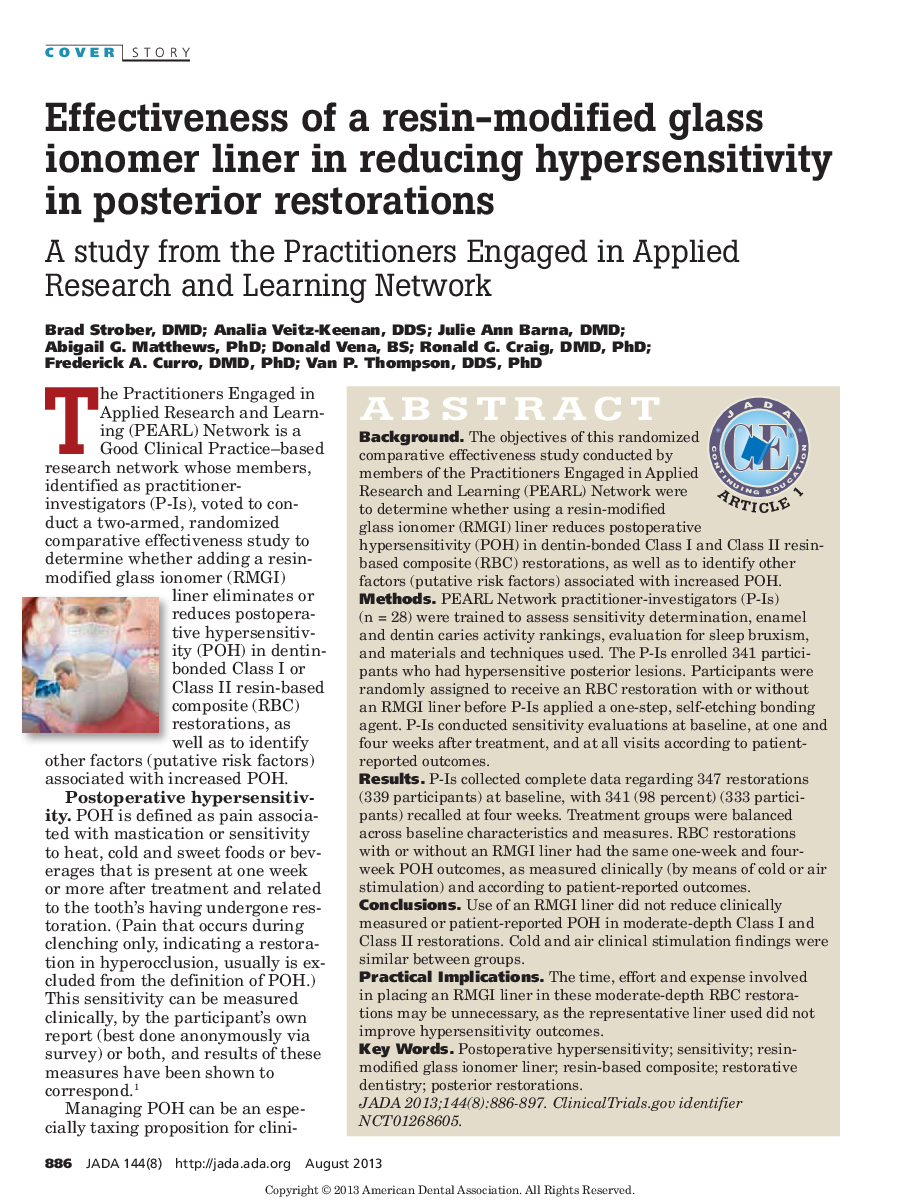| Article ID | Journal | Published Year | Pages | File Type |
|---|---|---|---|---|
| 3137635 | The Journal of the American Dental Association | 2013 | 12 Pages |
ABSTRACTBackgroundThe objectives of this randomized comparative effectiveness study conducted by members of the Practitioners Engaged in Applied Research and Learning (PEARL) Network were to determine whether using a resin-modified glass ionomer (RMGI) liner reduces postoperative hypersensitivity (POH) in dentin-bonded Class I and Class II resin-based composite (RBC) restorations, as well as to identify other factors (putative risk factors) associated with increased POH.MethodsPEARL Network practitioner-investigators (P-Is) (n = 28) were trained to assess sensitivity determination, enamel and dentin caries activity rankings, evaluation for sleep bruxism, and materials and techniques used. The P-Is enrolled 341 participants who had hypersensitive posterior lesions. Participants were randomly assigned to receive an RBC restoration with or without an RMGI liner before P-Is applied a one-step, self-etching bonding agent. P-Is conducted sensitivity evaluations at baseline, at one and four weeks after treatment, and at all visits according to patient-reported outcomes.ResultsP-Is collected complete data regarding 347 restorations (339 participants) at baseline, with 341 (98 percent) (333 participants) recalled at four weeks. Treatment groups were balanced across baseline characteristics and measures. RBC restorations with or without an RMGI liner had the same one-week and four-week POH outcomes, as measured clinically (by means of cold or air stimulation) and according to patient-reported outcomes.ConclusionsUse of an RMGI liner did not reduce clinically measured or patient-reported POH in moderate-depth Class I and Class II restorations. Cold and air clinical stimulation findings were similar between groups.Practical Implications. The time, effort and expense involved in placing an RMGI liner in these moderate-depth RBC restorations may be unnecessary, as the representative liner used did not improve hypersensitivity outcomes.
